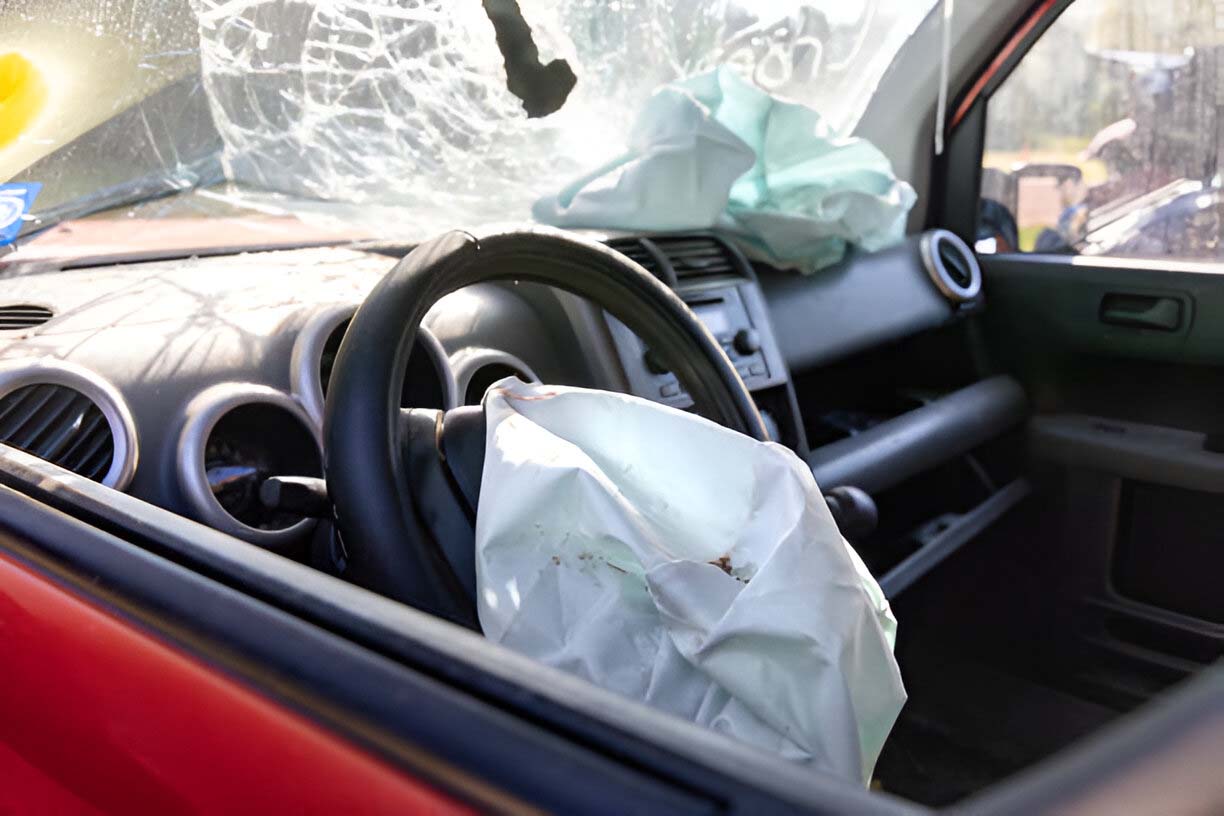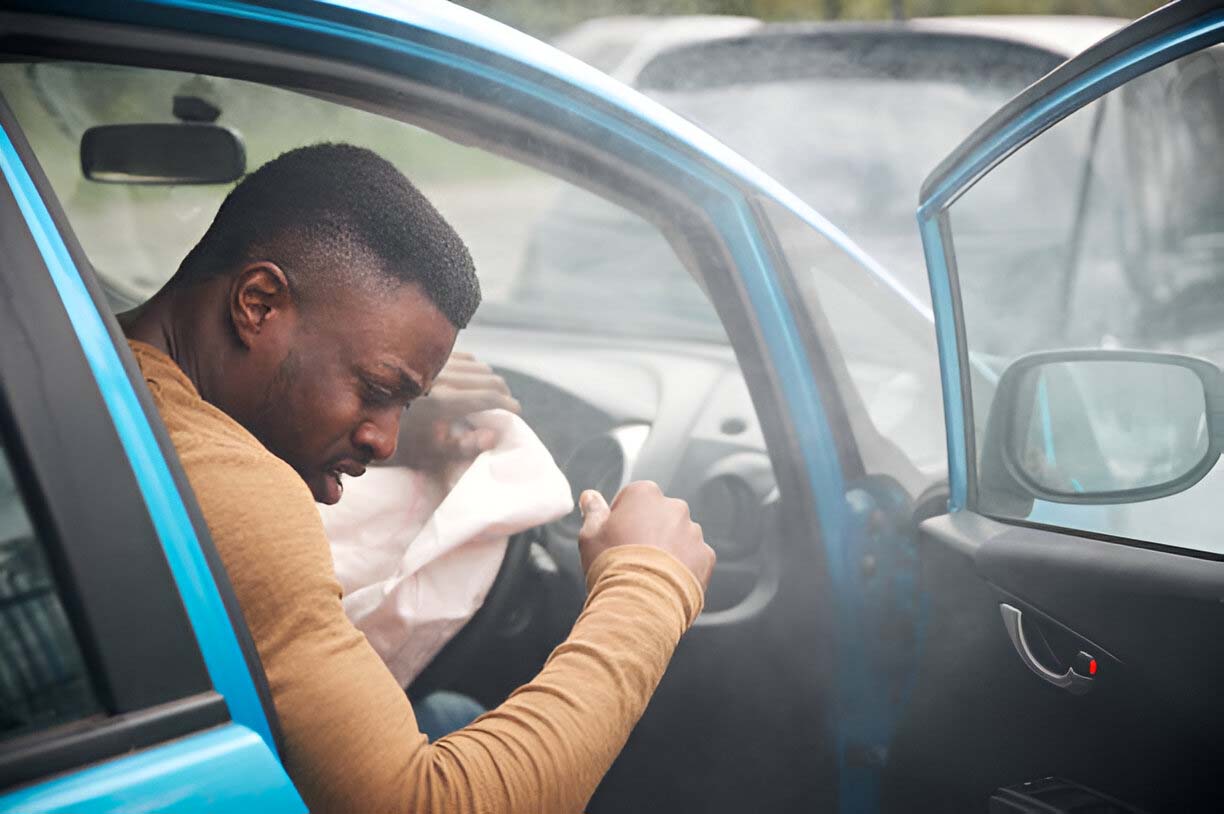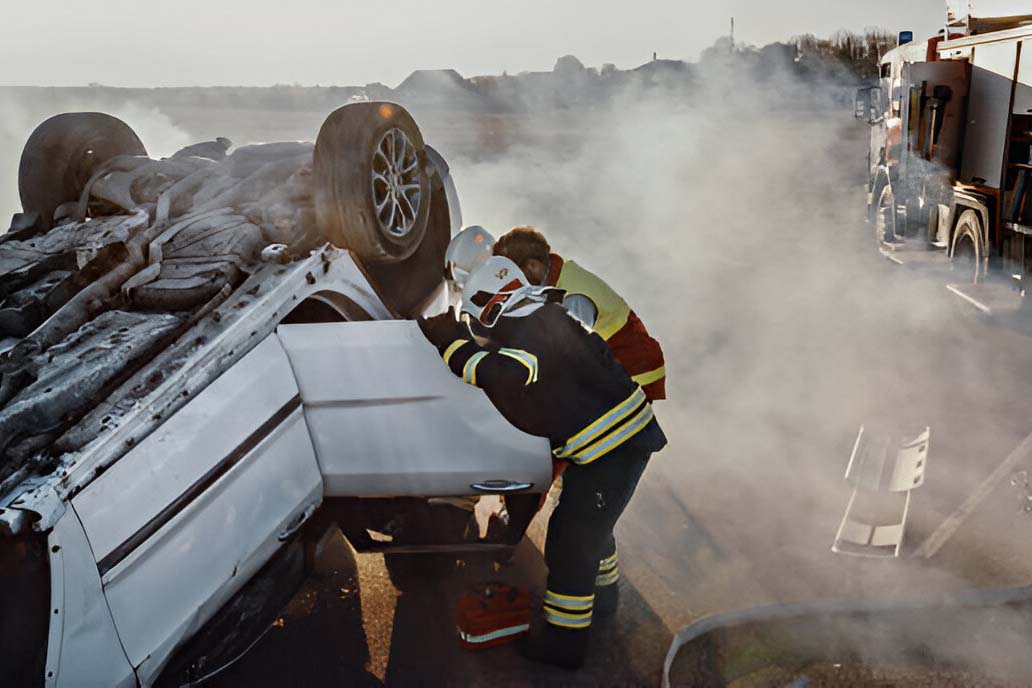You may feel a sense of safety and security whenever you get into your car. You get this feeling because you have airbags and other safety features. Airbags have been mandatory in vehicles since 1998, and this regulation has saved countless lives since.
The front-center airbag, in particular, protects vehicle occupants from colliding during a side-impact crash. It also helps them stay in position if their car rolls over.

How Do Airbags Function?
Airbags are designed to inflate instantly when an accident happens. It does this to cushion the driver and passengers from injury. The airbags form a firm barrier between the occupants and the hard surfaces inside a vehicle.
Airbags rely on sensors to tell them when to deploy. These sensors detect the severity of a crash and trigger airbags to inflate within milliseconds.
How Rollover Accidents Happen
A rollover accident refers to a car tipping onto its side or roof. When a driver loses control of their car around a sharp turn, it can cause a rollover. Rollovers can also happen when a road is in poor condition or there is a crash.
It is more likely for SUVs and trucks to roll over because they have a higher center of gravity. Either way, whether a car or truck, a rollover makes it more difficult for airbags to protect people from injuries. This is especially true if the airbags malfunction during the crash.
How Do Airbags Deploy in a Rollover Crash?
If a car tips or rolls, its rotation around the horizontal axis makes it harder for an airbag to deploy. Advanced sensors can determine a vehicle’s dynamics, including the roll and yaw rate. By doing this, it can detect the start of a rollover.
As the monitors detect a potential rollover, the airbag system may deploy side-curtain airbags. These airbags help protect occupants from hard impacts and keep them from being thrown from the car.
Unfortunately, not all cars have airbag systems that can sense a rollover. If your car is one of them, your airbags may not protect you properly in a rollover crash.

Factors That Affect Injury Severity
Rollover crashes are unique in that they can result in severe or fatal injuries. It’s also possible that the occupants of a rolled car may walk away without a scratch.
Several factors would influence either scenario. For instance, if all the occupants of a car wear seatbelts, it almost eliminates the risk of being ejected in a rollover crash.
Now, think about what would happen if no one in your car wears a seatbelt and you are in a rollover accident. Chances are the airbags would not sufficiently protect you and your passengers from being ejected.
Your car will also play a role in the outcome of a rollover accident. You may be better protected during an accident if you have a newer car with a reinforced roof and strong side windows.
Even the way you and your passengers sit inside your car can determine how seriously you will be injured. For instance, those sitting at the side of the car that touches the ground as it rolls will likely be more severely injured.
If your car lands on its roof, it will probably cave in or be crushed. Unfortunately, this could result in severe head or spinal injuries.
Potential Airbag Injuries During a Rollover Crash
It is also important to remember that your airbag system could cause you further injury. As much as your airbags are supposed to protect you, they may do more harm than good under certain circumstances.
If you or your passengers do not wear seatbelts or your seats are angled too close to the airbag system, it could worsen airbag injuries.
For example, if you are sitting too close to an airbag that forcefully inflates during a crash, you may have a broken nose.
Other potential injuries include broken ribs or internal bleeding, all due to the force of the airbag deployment. It is also possible that you may suffer an eye injury because of the airbag components or particles.
How to Prevent Airbag Injuries
Rollover accidents can happen in the blink of an eye. You have no control over them. But you have some control over what happens with your airbags during a crash.
To prevent unnecessary airbag injuries, always follow these guidelines:
– Never drive without wearing a seat belt. Do not allow passengers to ignore their seat belts either. You may find it annoying or restrictive, but a seat belt will automatically reduce the risk of injury in a severe car crash.
– Always sit upright whether you are the driver or a passenger. You should angle your seat slightly to create space between yourself and the airbag.
– Do not place rear-facing child seats with an active airbag in the front passenger seat. If an airbag deploys into the seat, it could be deadly for the child sitting in it.
– Regularly check for recalls related to the airbag system in your car. If there is a recall, return your car to the dealer or manufacturer immediately to resolve the problem.
Rollover Crashes Can Be Highly Unpredictable and Deadly
You can never take too many precautions to stay safe on the roads. Rollover accidents can happen anywhere and at any time.
A tragic example of this happened in February 2025 when a 17-year-old driver landed in the path of a delivery truck in Fairview, Oregon, and rolled his truck. The teen driver died while a teen passenger walked away virtually unscathed. The delivery truck driver was taken to hospital with serious injuries.
This is one of many scenarios highlighting how unpredictable a rollover accident can be.
Always Embrace Safety Measures on the Road
Airbags are vital in improving vehicle safety, but their effectiveness in rollover crashes remains limited.
It is crucial to normalize wearing seat belts, even if you are just driving to a corner shop. Seat belts, airbags, and other vehicle safety features can help protect you and your family during a rollover crash.
Don’t wait until the unthinkable happens. Work on creating safer driving habits today to protect yourself and your family tomorrow.








